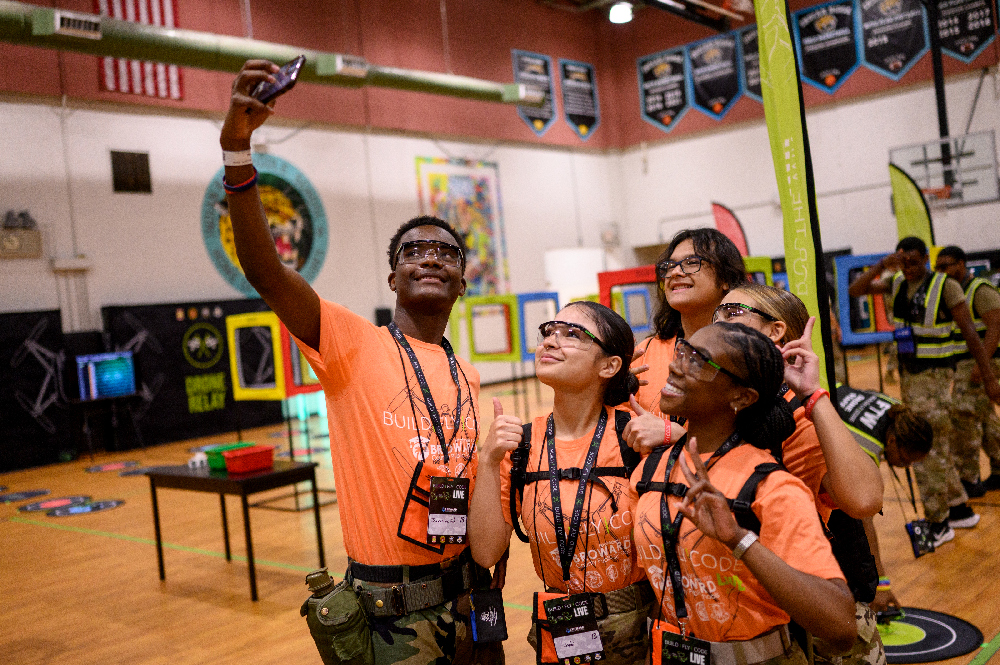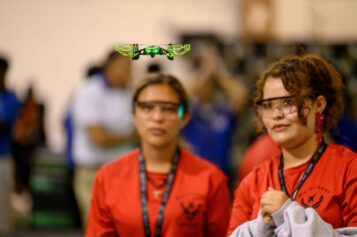
Paving the path for the future construction workforce
By Rob Harvey
The construction industry is on the cusp of a significant transformation, driven by rapidly advancing technology. However, as innovation accelerates, an aging workforce presents a critical challenge. Constructing more buildings keeps construction inflation under control, but — to build more — the industry needs more workers: around 723,000 per year. With many experienced professionals nearing retirement, a growing labor shortage threatens to stall progress and increase costs. This pressing issue underscores the need for innovative solutions to attract and train the next generation of tech-enabled construction workers.
One promising approach is the integration of drone technology into K-12 classrooms. By introducing students to drones and construction-related projects early on, we can spark their interest in the industry, equip them with essential skills and inspire innovation. Beyond that, the industry can prevent the long-term repercussions, like higher costs and reduced housing supply, that extend far beyond individual construction sites if the demand for labor stays unmet. When it comes to leveraging drones, school districts and contractors can follow practical, actionable steps to inspire students to meet the demands of construction’s tech-enabled future.
Revolutionizing construction with drones
Drones have become indispensable in the construction industry, offering a range of applications that enhance efficiency, safety and accuracy. They are used for site surveying, project monitoring, safety inspections and more. Companies that use drones for progress monitoring have reported a reduction in project time by up to 20%, as well as a significant reduction in workplace accidents — especially those related to falls, which account for 34% of fatalities in the construction industry.
Regular drone flights can capture up-to-date imagery and video footage, allowing project managers to track progress in real time and identify potential issues before they become major problems. This level of visibility is particularly valuable for large-scale construction projects where it can be challenging to maintain oversight over every detail. The data collected by drones can be easily shared among stakeholders, enabling better communication and more informed decision-making.
All of these technological advancements impact existing construction responsibilities and allow for new ones to emerge, changing the face of construction employment. For students, this offers a unique opportunity to engage with real-world projects and see firsthand the impact of their work.
Empowering students with practical skills
Integrating drones into classroom instruction offers a dynamic way to build critical thinking, problem-solving and collaboration skills — essential qualities for any construction professional. When students engage in drone-related projects, they apply their knowledge creatively and work together in teams, mirroring the collaborative nature of the construction industry. For students, this opens up an exciting path to engage directly with technology and consider how they might make innovative, practical and modern contributions to active projects.
Recent reports and case studies, globally, highlight that students involved in drone programs are ultimately more likely to express interest in pursuing STEM careers. It all starts with students’ confidence and capacity to view themselves as “STEM” or, specifically, “construction” people. For example, the Pennsylvania Department of Education saw the need for more STEM and computer science education and established the PAsmart Initiative to provide the training students need to prepare for the workforce of the future. Not only has the initiative sparked early interest in relevant career pathways, but it has also helped to close equity gaps in STEM and computer science education in the region, specifically for students with disabilities and other historically underrepresented populations, such as students of color and female students.
Strengthening industry-education partnerships
To maximize the impact of drone technology in education, it’s essential to foster strong partnerships between contractors and schools. Collaborative projects that allow students to apply drone technology in real-world scenarios are invaluable. Companies can also establish ambassador programs, where industry professionals visit schools to conduct workshops, participate in career days and mentor students.
Contractors may consider sponsoring design and building competitions for middle and high school students. Challenges could include designing a sustainable building or creating a digital model of a construction project using tools like Building Information Modeling. In partnership with community colleges, some high schools have developed drone programs that feed directly into college credit and eventual apprenticeships. Students are set on a clear pathway to receive certifications that make them attractive candidates for jobs requiring drone piloting skills for site monitoring, building inspections, 3D modeling and more, ultimately bridging the gap between education and employment.
Inspiring innovation and career exploration
The excitement of working with drones can ignite a passion for innovation among students. By piloting drones and observing their immediate impact on tasks, students are inspired to think creatively and explore new technological advancements in construction. This exposure not only broadens their career horizons but also addresses the industry’s labor shortage by showcasing the diverse career opportunities now available in construction.
For those looking for additional resources to support the incorporation of drone technology into construction education, the Association for Unmanned Vehicle Systems International provides guidelines and best practices for on-the-ground implementation. Additionally, the Construction Industry Institute offers resources on workforce development and the integration of technology in construction.
Contractors, educators and policymakers should collaborate to expand drone programs in schools, ensuring that students are not only exposed to cutting-edge technology, but also empowered to contribute to the industry’s future. By doing so, we can build a resilient, adaptable and skilled workforce ready to meet the challenges and opportunities of tomorrow’s construction landscape.
Rob Harvey is executive chairman and co-founder of For The Win Robotics.



 Join our thriving community of 70,000+ superintendents and trade professionals on LinkedIn!
Join our thriving community of 70,000+ superintendents and trade professionals on LinkedIn! Search our job board for your next opportunity, or post an opening within your company.
Search our job board for your next opportunity, or post an opening within your company. Subscribe to our monthly
Construction Superintendent eNewsletter and stay current.
Subscribe to our monthly
Construction Superintendent eNewsletter and stay current.